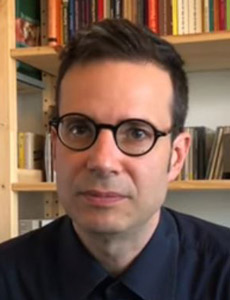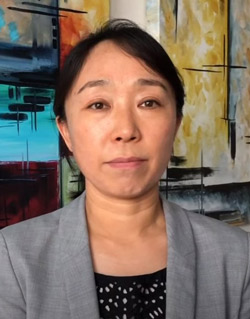A Shared Passion for HIV Cure Research
amfAR grantees Drs. Xu Yu and Mathias Lichterfeld discuss their differing approaches to curing HIV
With a shared passion for science, this husband-wife team—he from Germany, she from China—are a prolific couple in the field of HIV cure research, regularly publishing in leading peer-reviewed journals.
Dr. Xu Yu is an Associate Professor of Medicine at Harvard Medical School, a Principal Investigator at the Ragon Institute of MGH, MIT and Harvard, and Associate Immunologist in the Infectious Disease Division at Brigham and Women’s Hospital. Dr. Mathias Lichterfeld is a Professor of Medicine at Harvard Medical School and Co-Director of the Harvard Center for AIDS Research Program on HIV Eradication. He is a senior staff physician in the Infectious Disease Division at Brigham and Women’s Hospital and Massachusetts General Hospital, and a member of the Ragon Institute of MGH, MIT and Harvard.

Can you each briefly describe your current research interests?
We are both interested in HIV cure research but generally speaking, Mathias has more of a virological and clinical interest, while Xu is more interested in immune responses and host factors.
Dr. Lichterfeld: My work currently focuses on studying individual HIV-infected cells from people living with HIV, using technologies to capture their original physiologic state that was present when these cells were circulating in the human body. Most of this research uses next-generation sequencing technologies, which allow us to obtain deep, high-resolution insight into these cells. I am also involved in clinical trials to test novel approaches for HIV cure and eradication, and have a specific interest in pediatric HIV infection, which I study in collaboration with Dr. Roger Shapiro and other investigators from the Botswana-Harvard Partnership program.

Dr. Yu: My work centers on understanding the types of immune responses that may be able to target HIV-infected cells. Historically, my interest has been T cells, but I also study a number of alternative immune cells involved in fighting virally infected cells. I am particularly fascinated by “elite controllers,” who can serve as a model for what a cure of HIV infection may look like (read more), and I also work with persons who acquired HIV in the past but in whom I’m unable to detect intact HIV DNA (read more), despite analyzing billions of cells; it’s possible that such persons may have achieved a true cure of HIV infection, simply through the power of their immune system.
How did you get involved in HIV research?
Dr. Lichterfeld: I first got interested in HIV research during my first year working as a physician, shortly after graduating from medical school. My first job as a resident was in a hospital that served as a referral center for patients with hemophilia, many of whom had acquired HIV and/or hepatitis C through contaminated blood products. They were almost all young males in the same age group as myself, which frequently made it easy to connect. I also felt that understanding how HIV causes disease in some people but not in others was an extremely interesting question, and that studying HIV could help a lot in understanding how the immune system works.
Dr. Yu: I graduated from medical school in China, about 20 years ago. During my medical work as an intern in a major university hospital, I frequently saw firsthand what devastating effects HIV can have on a person’s life, specifically at the time when treatment was not always readily available. I also learned a lot about stigma associated with HIV and wanted to make a contribution for the better.
“amfAR has been a continuous research partner throughout our careers.”
What role has amfAR funding played in advancing your research?
amfAR has been a continuous research partner throughout our careers. Mathias still remembers that one of his first grants was from amfAR to study specific T cell subsets that may serve as a place for HIV to survive long-term during antiretroviral therapy—a question that is in many ways still at the center of interest of HIV cure research.
More recently, support from amfAR has allowed us to embark on a larger project—a study to evaluate individual HIV-1 sequences in a larger number of persons who remained on suppressive treatment for more than 15 years. Here, we are interested to understand the characteristics of infected cells that manage to survive for so many years, and how they are resisting human immune responses. We are also very much interested in how HIV reservoir cells may differ between men and women in this study.
How hopeful are you that we’ll eventually be able to cure HIV or learn how to control it without antiretroviral therapy?
We believe there has been incredible progress in understanding the mechanisms of HIV persistence, specifically during the last 10 years. One thing that we are learning more and more, not just in the context of HIV but also in cancer, is to never underestimate the power of the immune system. Our and others’ work increasingly suggests that the human immune system is able to corner HIV-infected cells from multiple directions, and that virally infected cells use sophisticated ways to avoid human immune activity. Much of the work we currently do is to find the weaknesses and vulnerabilities of HIV-infected cells—we are sure they exist, and that they can ultimately be effectively exploited for therapeutic purposes.
“One thing that we are learning more and more … is to never underestimate the power of the immune system.”
You’re both scientists at the Ragon Institute with similar research interests and you’re a married couple. Can you tell us how you met?
We met in a research lab. We were attracted by differences in character, background, and culture. We have complementary strengths and weaknesses. We discuss science a lot, and typically disagree profoundly with each other. Overall, it’s safe to say that our life is not boring.
What do you do to relax?
Dr. Lichterfeld: Swimming and relaxing in whirlpools and hot tubs, preferably with high-powered jacuzzi or in a Japanese onsen.
Dr. Yu: Traveling, family activities, Chinese food and culture.
Share This:
